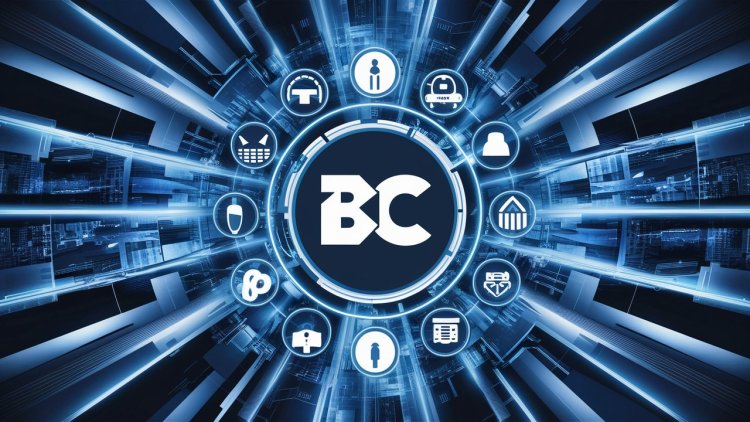Top 10 B2B Invoicing Best Practices for E-Commerce Success
Discover the top 10 B2B invoicing best practices to streamline your e-commerce operations. This guide covers key strategies such as ensuring accuracy, automating processes, and integrating invoicing with your e-commerce platform. Implementing these practices can lead to smoother transactions, improved cash flow, and stronger client relationships, driving your business toward greater success.
Share this Post to earn Money ( Upto ₹100 per 1000 Views )

In the realm of B2B e-commerce, invoicing isn’t just a formality it's a crucial aspect that can impact cash flow, customer relationships, and overall business efficiency. Effective invoicing practices can streamline operations and enhance your business’s credibility. For those using platforms like BigCommerce, partnering with a BigCommerce development company can be particularly beneficial. Let’s explore the top 10 B2B invoicing best practices to help you achieve e-commerce success.
1. Prioritize Accuracy
Accuracy is the cornerstone of effective invoicing. Ensure that every invoice you issue is free from errors. Double-check details like quantities, prices, and payment terms before sending an invoice. Mistakes can lead to payment delays and damage your professional reputation. A thorough review can prevent these issues and ensure smooth transactions.
2. Include Clear Payment Terms
Define your payment terms clearly on each invoice. This includes specifying the due date, late fees, and acceptable payment methods. Clear terms help avoid misunderstandings and ensure that both parties are on the same page. When customers know exactly what’s expected, it’s easier for them to comply with your terms.
3. Utilize Professional Templates
Using professional invoicing templates can enhance the presentation of your invoices. Templates ensure consistency and add a level of professionalism that can make your business appear more credible. Many invoicing tools offer customizable templates that can be tailored to your brand, adding a touch of professionalism to every invoice.
4. Automate Where Possible
Automation can significantly reduce the time spent on invoicing tasks. Consider using invoicing software that integrates with your e-commerce platform. Automation tools can help generate and send invoices, track payments, and even send reminders for overdue invoices. This not only saves time but also minimizes human error.
5. Incorporate E-Commerce Integration
For a seamless invoicing process, ensure that your invoicing system integrates well with your e-commerce platform. If you’re working with a BigCommerce Development Company, leverage their expertise to connect your invoicing system with your online store. This integration ensures that invoice data is accurately pulled from orders, reducing the need for manual data entry.
6. Implement a Robust Follow-Up System
A follow-up system is essential for managing overdue invoices. Develop a systematic approach for sending reminders and follow-ups. An automated reminder system can help ensure that outstanding invoices are addressed promptly. Regular follow-ups can improve cash flow and reduce the number of overdue invoices.
7. Offer Multiple Payment Options
Flexibility in payment options can enhance the customer experience and accelerate payment processing. Offer various payment methods such as credit cards, bank transfers, and online payment systems. Providing multiple options makes it easier for customers to pay, which can lead to faster payments and fewer delays.
8. Maintain Clear Communication
Effective communication is key to successful invoicing. If there are any discrepancies or issues with an invoice, address them promptly. Keeping lines of communication open helps resolve issues quickly and maintains a positive relationship with your clients. Clear communication can also prevent misunderstandings and foster trust.
9. Keep Records Organized
Organized record-keeping is crucial for managing invoices and tracking payments. Maintain a detailed record of all invoices sent, received payments, and any follow-up actions taken. Proper record-keeping not only aids in financial management but also ensures you have accurate information for audits and financial reviews.
10. Review and Refine Your Invoicing Process
Regularly review and refine your invoicing process to ensure it remains effective and efficient. Seek feedback from clients and team members to identify areas for improvement. Continuously refining your process can help address any issues and adapt to changing business needs.
Conclusion
Mastering these B2B invoicing best practices can lead to smoother transactions, better cash flow management, and stronger client relationships. By focusing on accuracy, leveraging automation, and integrating with your e-commerce platform, you can enhance your invoicing process and contribute to your e-commerce success. If you're looking to implement these practices but need assistance, consider partnering with a BigCommerce Development Company. Hire BigCommerce developers to streamline your invoicing and ensure you’re utilizing the best tools and practices available.
Ready to elevate your invoicing game? Hiring experienced e-commerce developers can provide you with the support and solutions you need. Whether you need to automate your invoicing or integrate with your e-commerce platform, professional help can make all the difference. Reach out to skilled developers and make your invoicing process as smooth and efficient as possible.
Incorporating these practices into your B2B invoicing strategy will not only improve your operational efficiency but also enhance your overall e-commerce performance. Here’s to better invoicing and even greater business success!














